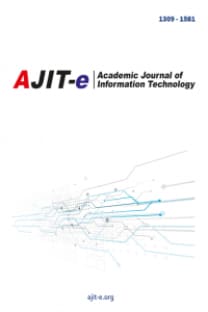Tendency of usage of social media tools by the public relationspractitioners: An evaluation on Turkey's 500 biggest ındustrialcorporations
Tendency of usage of social media tools by the public relationspractitioners: An evaluation on Turkey's 500 biggest ındustrialcorporations
The interactive communication in the artificial environment has widened its limits with theusage of the social media tools and has become an inevitable element of the digital era. Theusage of the tools such as social network sharing sites (Myspace, Facebook, Faceparty,Friendster), blogs, e-mail usage, intranet, video conferencing, forums, video sharing sites (suchas Youtube), music sharing sites (Jamendo.com)], business network sites (Linedln, Xing,eAcademy), cooperative web sites (Wikipedia), instant message, vikis (vikipedia), podcasts,training materials sharing (Mozilla s spreadfirefox.com, Linux.org), social bookmarking,bookmarking sites ensuring its users to make online news, stories, music (Digg, del.icio.us,Newsvine, Mixx it, Reddit), personal publication (weblogs, twitter) which take place in thesocial media tools by the public relations practitioners gradually gains importance in terms ofthe public relations practitioners.In this study, the place and importance of social media tools with regards to public relationsand their role in creating a new public relations process are discussed. Accordingly, an onlinequestionnaire form was prepared and sent via e-mail to the public relations practitioners. Thesepublic relations practitioners were determined through the survey results of "Turkey's Top500 Industrial Enterprises 2011 which was conducted regularly by Istanbul Chamber ofIndustry (ISO). An assessment intended to identify the trends and reasons of use of socialmedia tools by the public relations practitioners who work in the biggest companies of Turkeyand their perceptions of social media and traditional media was made.
___
- Akar E (2011) Sosyal Medya Pazarlaması. Sosyal Webde Pazarlama Stratejileri, Efil Yayınevi, Ankara.
- Aşman Alikılıç Ö (2011) Halkla İlişkiler 2.0. Sosyal Medyada Yeni Paydaşlar, Yeni Teknikler, Efil Yayınevi.
- Bradley P (2010) Be Where The Conversations Are: The Critical Importance of Social Media , Business Information Review, 27 (4), p. 250.
- Brown R (2009) Public Relations and The Social Web, Kogan Page, London . Fuchs C (2008) Internet and Society: Social Theory in the Information Age, Routledge, New York.
- Herring, Susan C., (et al), Weblogs as a Bridging Genre , http://portal.colman.ac.il/users/www/86/Weblogs.pdf, Erişim Tarihi, 03.09.2009
- Onat F., Aşman Alikılıç Ö (2008) Sosyal Ağ Sitelerinin Reklam ve Halkla İlişkiler Ortamları Olarak Değerlendirilmesi, Journal of Yaşar University, 3(9), pp. 1134- 1135.
- Öymen Dikmen G (2011) Tüketen Üreticiden Üreten Tüketiciye Dönüşümde Sosyal Medyanın Rolü , İletişim ve Teknoloji. Olanaklar, Uygulamalar, Sınırlar, Kırmızı Kedi Yayınevi, İstanbul.
- Özgen E (2012) Sosyal Medya ve Halkla İlişkilerde Değişen Medya Anlayışı, Sosyal M edya/Akademi, Beta Yayınları, İstanbul .
- Sayımer İ (2008) Sanal Ortamda Halkla İlişkiler, Beta Yayınları, İstanbul .
- http://press.linkedln.com/about, Erişim Tarihi: 27 Haziran 2012.
- http://www.flickr.com/, Erişim Tarihi: 27.06.2012.
- http://www.xing.com/tr, Erişim Tarihi: 27.06.2012 .
- Yayın Aralığı: Yılda 4 Sayı
- Yayıncı: AKADEMİK BİLİŞİM ARAŞTIRMALARI DERNEĞİ
Sayıdaki Diğer Makaleler
Nilüfer SEZER, Nuray YILMAZ SERT
Feride AKIM, Aybike ÖZEL PELENK
Türk Kamu İnşaat Projelerinde Yaşanan Uyuşmazlıklara Yönelik Bir Veri Madenciliği Yaklaşımı
İsmail C. YILMAZ, Attila DİKBAŞ
Feride AKIM, Aybike PELENK ÖZEL
Nuray SERT YILMAZ, Nilüfer SEZER
Sanal Gerçeklik Ortamları ve Uygulamalar: Spor ve Sanal Ortam Göstergeleri̇
NATO’s Missile Defense Shield: Turkey’s Western Preferences
Eğitsel Sosyal Yazılımların Kabul ve Kullanımına Yönelik Bir Model
NAto's missile defense shield: Turkey's western preferences
Teknoloji Çağında E-Tüketim ve Genç Tüketicilerin Değişen Tüketim Algıları
